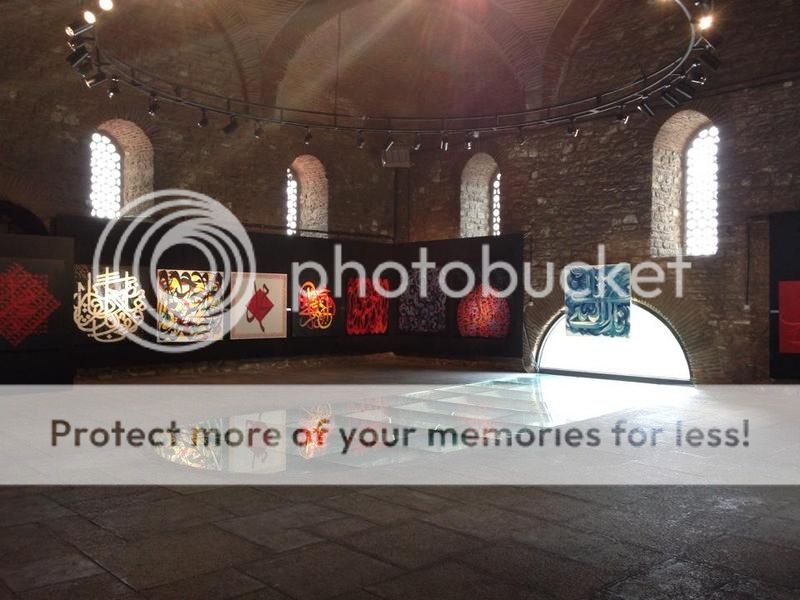GPS : 41°01'39.3"N 28°58'51.9"E / 41.027583, 28.981083

PHOTOGRAPHS ALBUM
TOPHANE-İ AMİRE CULTURE AND ART CENTER
After 1850s, the building became the centre of the weaponry industry and commerce. In the 1900s, it was used as a education centre. At 1958, it is started to use as a military museum. The building has undergone various arrangements until 1992. Tophane-i Amire transferred to the Mimar Sinan University at 1992.
This elegant, evocative exhibition hall is sponsored by Turkey’s premiere fine arts university, Mimar Sinan Güzel Sanatlar Üniversitesi (Mimar Sinan Fine Arts University). Now its eight-domed ceiling shelters a very different endeavor; it hosts university and private art exhibitions
Available for exhibitions, fairs, concerts, stage performances, dinner receptions and cocktail parties. With an area of 1022 sqm, this historic building has a capacity of 300 people for banquets and 600 people for cocktail parties.
It has been using as a culture and art center consisting of three exhibition halls i.e. Tophane-i Amire Beş Kubbe, Tophane-i Amire Tek Kubbe and Tophane-i Amire Sarnıçlar. Both the native and international collections are exhibited in these multipurpose galleries through the year.
CANNON BALL FOUNDRY
Tophane-i Amire was constructed in the XV. century, on the area of Ste. Claire and Aya Photini churches which called as Metopon in the Byzantine period. After the conquest of Istanbul, Sultan II. Mehmed built a cannon-ball casting factory and Tophane-i Amire became a place in which the cannon balls for Ottoman army and the navy produced.
Built in the 15 th Century, the Tophane-i Amire (Imperial Artillery) building was used for over 450 years as a foundry producing cannons for the Ottoman Empire. In the 16th century the building was enlarged by Sultan Süleyman the Magnificent, and in the 18th century a water cistern was built to provide water for the surrounding district. After the establishment of the Turkish Republic the Tophane-i Amire remained under the auspices of the Ministry of Defence until 1992, when it was transferred to Mimar Sinan University.
Tophane-i Amire, 15th century cannon foundry was home to the industry that gave the Tophane neighborhood its name. The current mortar and brick building is the 19th century makeover of the former foundry.
The first building was attributed to Fatih Sultan Mehmet after the conquest of Constantinople. As the Ottoman armies grew larger and went further out, the need for more and larger cannon became important.
Sultan Süleyman the Magnificent had a new and larger complex built. Here and there one can still see the remains of other buildings that were part of the complex and places where the workers stayed. Sultan Süleyman reportedly offered a large reward for experienced cannon makers from all over the empire. Today we see a structure that Sultan Mahmut II built, and there is some speculation that this may have been used for various functions after he disbanded the Janissaries and other regiments in 1826.
Mines, mortars, wagons and projectiles were produced in addition to cannon. By employing metal alloys and using better equipment, the Ottoman Army became much better equipped than ever before.
The structure today requires imagination when it comes to casting iron. Searingly high heat, potential danger from cracks and explosions - this was not a safe, gentle profession. The 17th century Ottoman travel writer Evliya Çelebi has a lively description of the foundry, including even how the workers dressed, although perhaps undressed would be a better description. The sultans had a small kiosk built across from the foundry from which they could watch the workmen going in and out and marching in various parades.
Sultan Beyazıt II enlarged the cannon foundry built by Fatih Sultan Mehmet. The arsenal was rebuilt by Süleyman the Magnificent in the 16th century and it was also used as an exhibition area for cannons captured in wars. The barracks and drill fields built between 1757 and 1774 in the area were damaged in the fire of 1804.
The current cannon foundry building dates back to 1803. In 1956, the terraces between the sea and the foundry were removed during the construction of Necatibey Street. The gunpowder needed for cannons was produced by Sultan Mahmut II in the Ataköy district, formerly known as Baruthane.
The iron used in cannon molding was brought from Sinop and Amasra regions; the lead and tin were brought from Europe especially from England. Sultan’s leaving the palace and setting sail was announced by artillery a salute shooting from Tophane (arsenal), and the salvo fire of the ships, entering to the harbour, was replied by artillery shooting from Tophane instead of Palace.
LOCATION SATELLITE MAP
MORE INFO & CONTACT
Tel : +90 212 293 4648
These scripts and photographs are registered under © Copyright 2017, respected writers and photographers from the internet. All Rights Reserved.
No comments:
Post a Comment